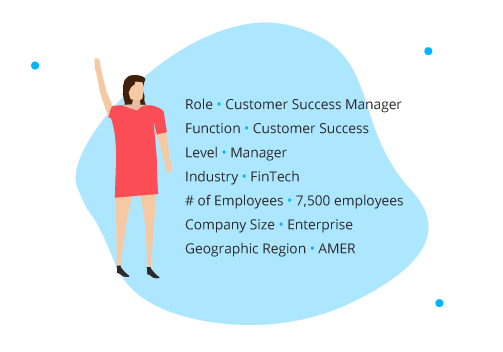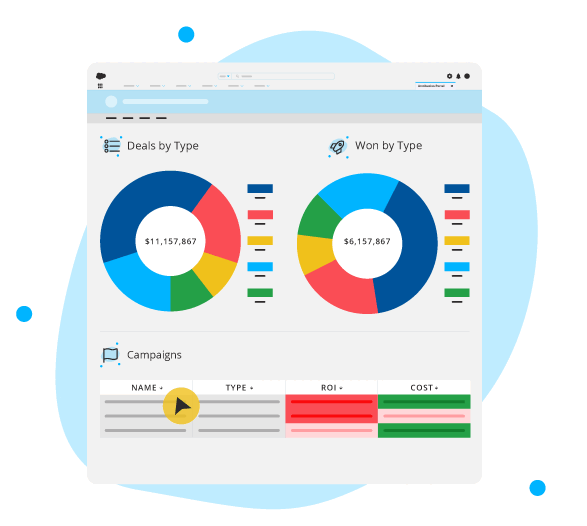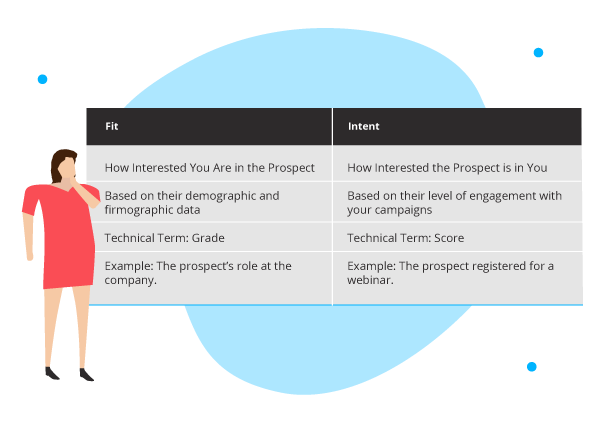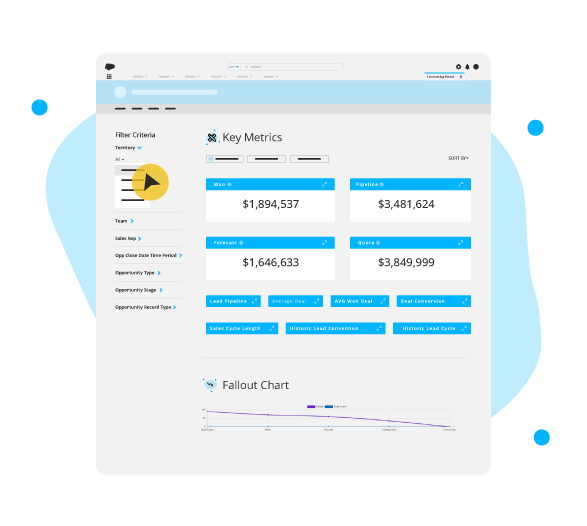Founder & CEO, Craig Jordan, explained on a fireside chat that revenue operations or RevOps at its core is “optimizing processes, data structure, and reporting across your go-to-market (GTM) teams, sales, marketing, and customer success.” When operational structures across these teams are neglected, not set up right, or are lacking, B2B SaaS companies often find they are held back or are not executing at their full potential when it comes time to scale. How do you know when you are missing critical pieces of your revenue operations? Chances are you may already be feeling the effects, but in some areas, you may not know until you do a RevOps audit or an evaluation of your essential processes across your GTM teams.
We created a self-serve RevOps audit that go-to-market leaders, such as yourself, can take to understand what the current state of your revenue operations is and the areas where there are opportunities for growth. In addition to identification, the audit also provides feedback, resources to best practices, and recommended next steps based on your answers, so that you have an initial plan moving forward for how to advance your RevOps.
This self-serve audit is great for an initial “pop the hood” check of your revenue operations, to think through the questions that the experts would be asking to understand the state of your processes, data, and reporting across your GTM teams. If you would prefer to have a more detailed audit report directly from an expert and do not mind going through the process of an MNDA and granting system access, then SaaScend can also do the audit for you as another option.
Why do a RevOps Audit
RevOps spans across sales, marketing, and customer success, including processes, reporting, and data structure, which means multiple systems, resources, and people are involved. Meaning that complications can ensue and if just one critical process is not functioning properly as your B2B Saas company scales, it can cause a ripple effect with major costs:
-
-
- Making malinformed business decisions from unreliable data.
- Wasted budget investments into campaign initiatives that are not yielding results.
- Increased operational costs from manual, tedious, and time consuming tasks.
- High churn rates due to poor customer experiences from internal misalignment.
- Inflated technical debt from disparate systems and unused software capabilities.
-
All of the above can be avoided when teams take the initiative to evaluate the state of their revenue operations and prioritize optimizing their processes, data structure, and reporting across go-to-market, so that they can scale farther faster and actually achieve their revenue potential.
What should you be assessing for your revops audit? What are the questions to be asking yourself? What are the high impact areas to look at to get a quick pulse check? To help guide you in the right direction, we have included the areas to start evaluating first from our self-serve RevOps audit at a high level below.
How to Start Assessing your Revenue Operations
Your revenue operations includes the tech stack used by your go-to-market teams and today, that can mean an average of 75 technologies, and between 4 and 10 for the sales team alone. For this audit we will focus on your foundational systems, the CRM and marketing automation platform, so you will notice both of these are referenced throughout the areas of focus described below.
#1
Let’s start at the beginning with your Ideal Customer Profile (ICP) and Buyer Personas.
Have you identified your ICP? Have you identified your ideal buyers and who they are at the companies that fit your ICP? Do Marketing and Sales both have an understanding of this? Have they sat down to have a conversation and get aligned on this area? Do you have mechanisms in place defining your Ideal Customer Profile and your Buyer Personas in your CRM and marketing automation systems?

If your sales and marketing teams are not clear on who your best fit customers are and they do not have a clear understanding of who they are targeting for their messaging and initiatives, then they could experience high lead volume, low impact.
If you are an early stage startup and still defining these, then you know you may be having to do a lot of trial and error to see what types of conversations, deals, and then customers are leading to the most
revenue for the business. The main recommendation that we give is to make sure that as you log new opportunities in the CRM, be sure to associate contacts with those opportunities, so that over time you will have a collection of data that will start to show trends in not only ICP, but your ideal buyers at those companies.
#2
If you have your ideal audience defined, are you running an Account Based strategy?
An account based strategy focuses the efforts of your go-to-market teams on the accounts that have already been pre-identified to fit your ICP. They could be accounts that you have not yet signed or current customers that become strategic targets for expansion.
If you are running an account based strategy, the questions to ask are, have you identified your total addressable market (TAM) and your serviceable addressable market (SAM) in your CRM and marketing automation systems? Do you have an account tiering system in place?
Having this defined in your systems will better align your go-to-market teams, giving everyone insights into high impact prospects and customers where your business can provide high value and you can yield high revenue.
#3
How are you tracking attribution for the campaigns that target the audience in your ICP?
Are you able to identify the campaigns that are driving revenue for the business? Can you tell which campaign types are your most successful channels? What is driving the most leads? Do you have all of this setup as a campaign hierarchy in your systems for actionable data when you analyze reports? Do you have contacts associated with your opportunities to be able to attribute revenue back to your campaigns?
Attribution data is an essential for go-to-market leaders to be able to tell what is working and what is not for smarter budget investment. Without these insights, your teams are potentially wasting efforts on initiatives that are not yielding results for the business. Which is why we have included it in our list of areas to assess for your revenue operations.
#4
How are you qualifying inbound leads that engage with your campaigns?
Proper lead qualification better aligns marketing and sales, accelerates your funnel, and increases your win rate. Having the right leads be sent over to sales

at the right time prioritizes the time of your sales team, so that they can focus their efforts on the leads that are most likely going to do business with you.
The part to examine here is:
-
-
- Are you qualifying leads based on a combination of how well their buyer profile matches your ICP and how engaged they are with your marketing campaigns (fig. 1)?
- Have you also incorporated the qualifying questions that sales is asking into your lead rating process?
- Is your Marketing Qualified Lead (MQL) criteria defined, so that both teams are aware of the standard?
-

Figure 1 Using a Combination of Fit & Intent to Qualify Leads
Your lead qualification process is the trigger for prospects to be sent over to sales. The start of this transition and the alignment between the two departments which is why it should be assessed during your RevOps evaluation.
#5
Once leads are qualified, how are you routing them to sales?
Lead qualification makes sure that the right leads are passed over at the right time, but your lead routing process ensures that they are getting in front of the right people.
Your organization, the size of your sales team, and your volume of inbound leads will determine how you should set up your routing process, but Craig’s biggest piece of advice to teams is, “just make sure it is automated.” The SaaScend team has come across too many sales leaders spending their team trying to route every lead manually and it is not sustainable for your business to scale.
While you evaluate your lead routing process, you can also look at your process for routing cases, and new customers to customer success. Are these processes defined? Have these been integrated into your CRM and any success management platform that you are using?
Reflect and see if your routing processes are fast and accurate across sales, marketing, and customer success to understand where you stand in terms of routing.
#6
How are you tracking lead and contact progression as they advance through your funnel?
Are you able to understand how long it takes for a lead to enter your funnel to then progress until they become a customer? Do you know your typical rate of conversion as leads and contacts pass from one lifecycle stage to the next? Do you know when certain stages in your funnel are being stalled due to inefficient processes?
The lifecycle spans across sales, marketing, and customer success. Having your stages mapped out and then implemented into your systems gives your team better visibility into your funnel progression to understand your velocity and rates of conversion.
Incorporating this with your marketing campaign tracking helps your team to see, if we generate 1,000 prospects from a webinar this month, how many of those prospects will convert into customers and how long will it typically take them to get there? If the revenue team is behind on their goal, they can already know which campaigns to run that will result in opportunities won for the business at the fastest rate.
There are several insights to obtain from lifecycle stage tracking for your go-to-market teams, which is why it should be assessed during this evaluation.

Gain Funnel Visibility and Increase Your Lifecycle Velocity
#7
How are you executing your sales process when opportunities from new and existing business enter the pipeline?
Is your sales process defined in your CRM? Do you have automations set up to remove the need for tedious and repetitive tasks to streamline your sales process and empower your team to focus more on selling?
A streamlined sales process can accelerate sales cycles, helping your team to close more deals and provide a better buying experience for prospects and customers.
Optimizing the sales process also leads to better data, which means better insights for leadership to coach their team and make strategic decisions.
#8
How are you forecasting and tracking your current progress against quotas?
One of the biggest forecasting challenges is not having the accurate, complete, and actionable data to be able to set goals and understand how close the team is to reaching their goal. When data is unreliable, leaders have a more difficult time also planning for the future and knowing what resources the team and the business might need and when.

Obtaining accurate and actionable forecasting data starts with the question of, to what level is your sales team keeping their pipeline data up-to-date? Are you using forecasting categories? Are you incorporating a best, probable, and worst case method today?
Making sure your forecasting process gets you the data you need to assess, plan, and coach is critical to the success of your business, which is why it is included as a topic of focus for this audit.
#9
Are your systems set up to track your SaaS metrics to understand the health of the business as a whole
As this is a RevOps audit for B2B SaaS companies, tracking your SaaS metrics, such as lifetime value, cost of acquisition, annual recurring revenue, monthly recurring revenue, and churn, are critical to understanding the overall success of your business.
These metrics connect back to your go-to-market teams, informing them of areas in which they are succeeding, areas for improvement, and help them identify channels and customer profile trends across accounts to understand the types of campaigns, customers, and products that have the best lifetime value, lowest expectancy to churn, and lowest cost of acquisition.
Understanding your performance for these metrics has its benefits, but it also enables your team to avoid danger zones. For example, if you are having an unusually high churn rate for a certain product, knowing that to identify a red flag is critical, so that your team can make improvements and avoid the same thing potentially happening across other product lines.
Your RevOps Audit Takeaways
After going through and answering all of the above questions and thinking through where your processes, reporting, and data stand across your go-to-market teams, you will have a better idea of the success of your revenue operations and if your organization has the foundation in place to scale for success when the time comes.
“It’s now way easier to forecast and make strategic decisions.”




